Taipei is often overlooked as a connecting point to many destinations in Asia. From here, you’re around two hours away from major cities in Japan, South Korea, the Philippines and Hong Kong. By extension, Taiwan-based China Airlines isn’t usually top of mind when it comes to journeys from Australia to Asia. But with excellent reward seat availability and low carrier charges when using Qantas Points, plus timely connections from Taipei, it’s perched among my favourite ways to hop around the continent.
China Airlines’ swanky A350s connect Australia’s east coast direct to Taipei. Fly overnight from Melbourne, Sydney or Brisbane in your choice of three cabins, including ‘Premium Economy Class’ – for the purpose of this review, we’ll shorten it to Premium Economy. Having enjoyed a flight with China Airlines on its A350 Business Class a few months prior, I’m eager to see how its Premium Economy product stacks up. So, I hop onboard a flight from Melbourne to Taipei to find out.
Check-in and boarding
I arrive at Melbourne International Airport two hours before my flight is due to depart. I’m prone to blind confidence, even when flying overseas. Pleasingly, there’s not a single person in any of the China Airlines check-in queues on a Friday night.
I’m swiftly checked in at the dedicated Premium Economy counter, with my bags tagged all the way through to my final destination, Fukuoka, and boarding passes issued for both flights. Flying in Premium Economy, I have a 28kg checked baggage allowance. But since I’m en route to Japan, my luggage is deliberately light. If you know, you know.
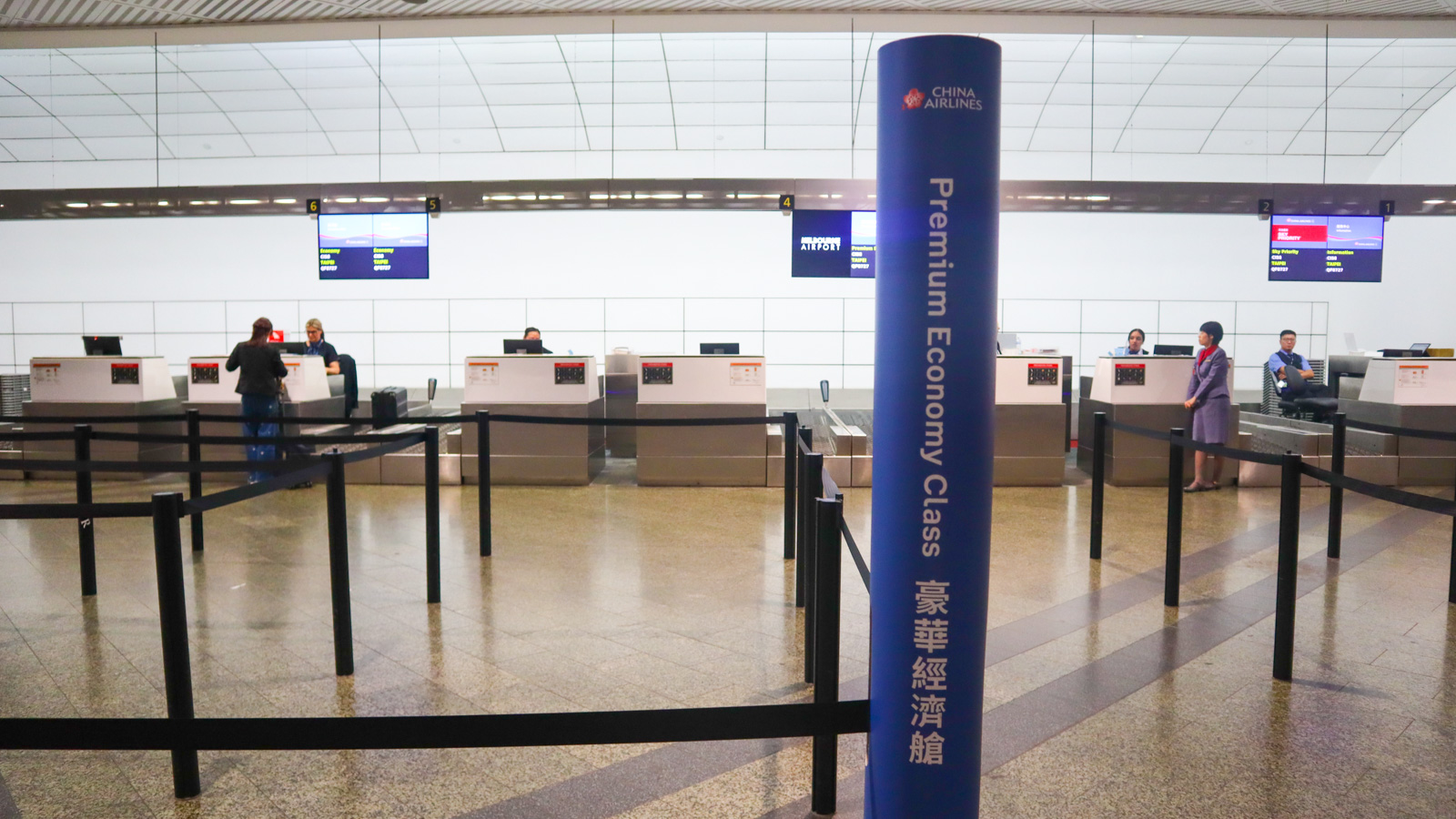
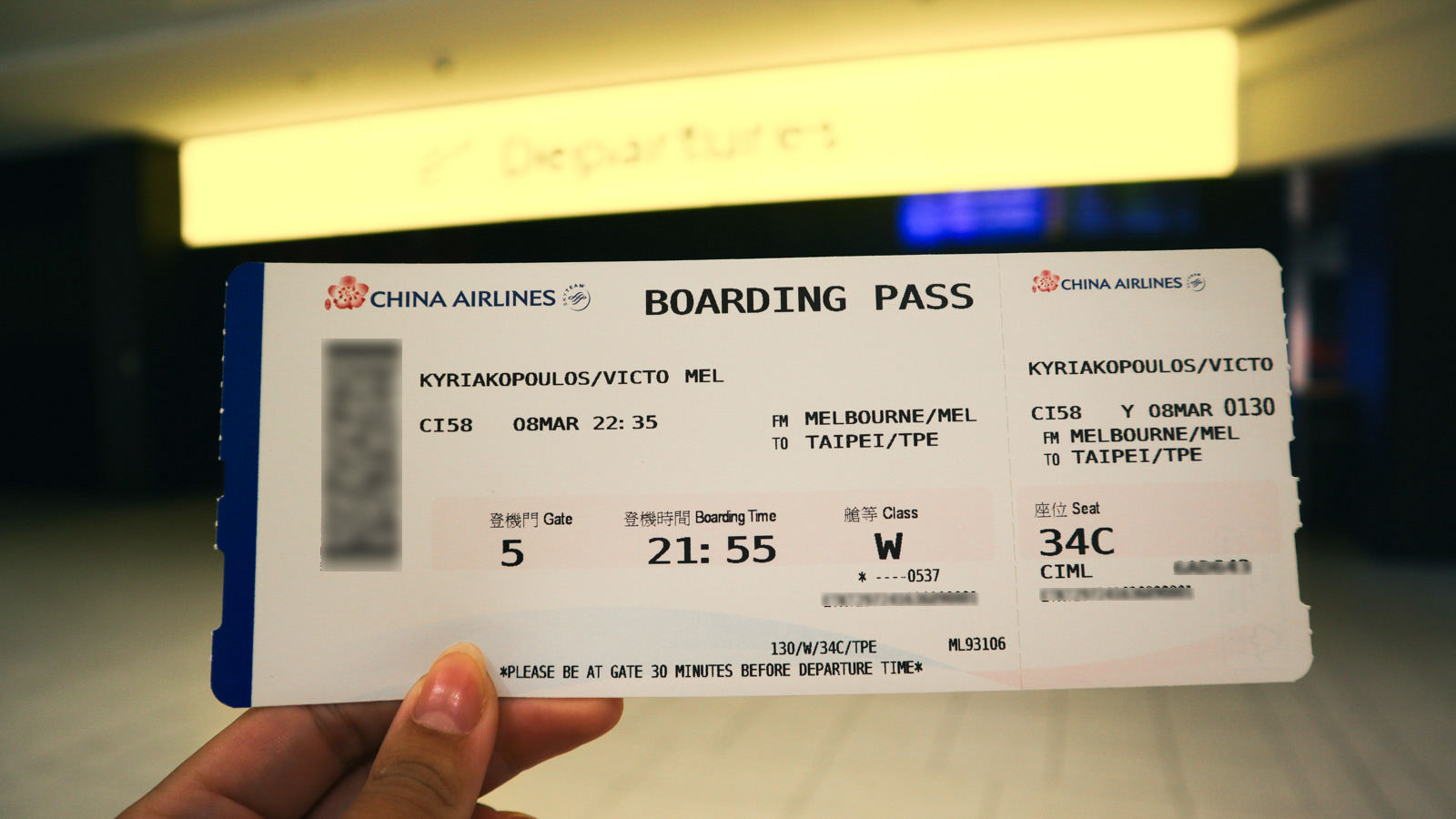
Security and immigration at Melbourne Airport at this hour are speedy, and I’ve got time to spare before my flight boards. There’s no lounge access included with my Premium Economy ticket. But if you have Priority Pass, complimentary with certain credit cards like the American Express Platinum or Citi Premier, you can access The House, Plaza Premium or Marhaba Lounge when departing from Melbourne.
China Airlines A350 Premium Economy seating
Stepping onboard an overnight flight with China Airlines is a joy. The ambience in the Premium Economy cabin is warm, accented by the soft golden hues of the overhead lighting and subtle woodgrain finishes.
Seats are configured in a 2-3-2 layout. I settle into my aisle seat in a cluster of two. As the aircraft door closes, I breathe a silent sigh of relief that the window seat next to me is vacant. In fact, looking around me, there are quite a few vacant seats in the Premium Economy and Economy cabins.
I quickly discover that when it comes to legroom, the window seat is the place to be. The aisle seat has a leg that you’ll need to manoeuvre around when storing your bag or stretching your legs under the seat in front. Being neighbourless, I take the opportunity to hop over to the window to maximise my legroom.
When pre-selecting my seat on the China Airlines website, I’d strategically positioned myself in the last row of the Premium Economy cabin. The lavatories for Premium Economy passengers are at the front of the cabin, and there’s a curtain to separate the Economy cabin behind. No passengers hovering around the lavatories, no galley and minimal foot traffic – I’m banking on a restful overnight flight.
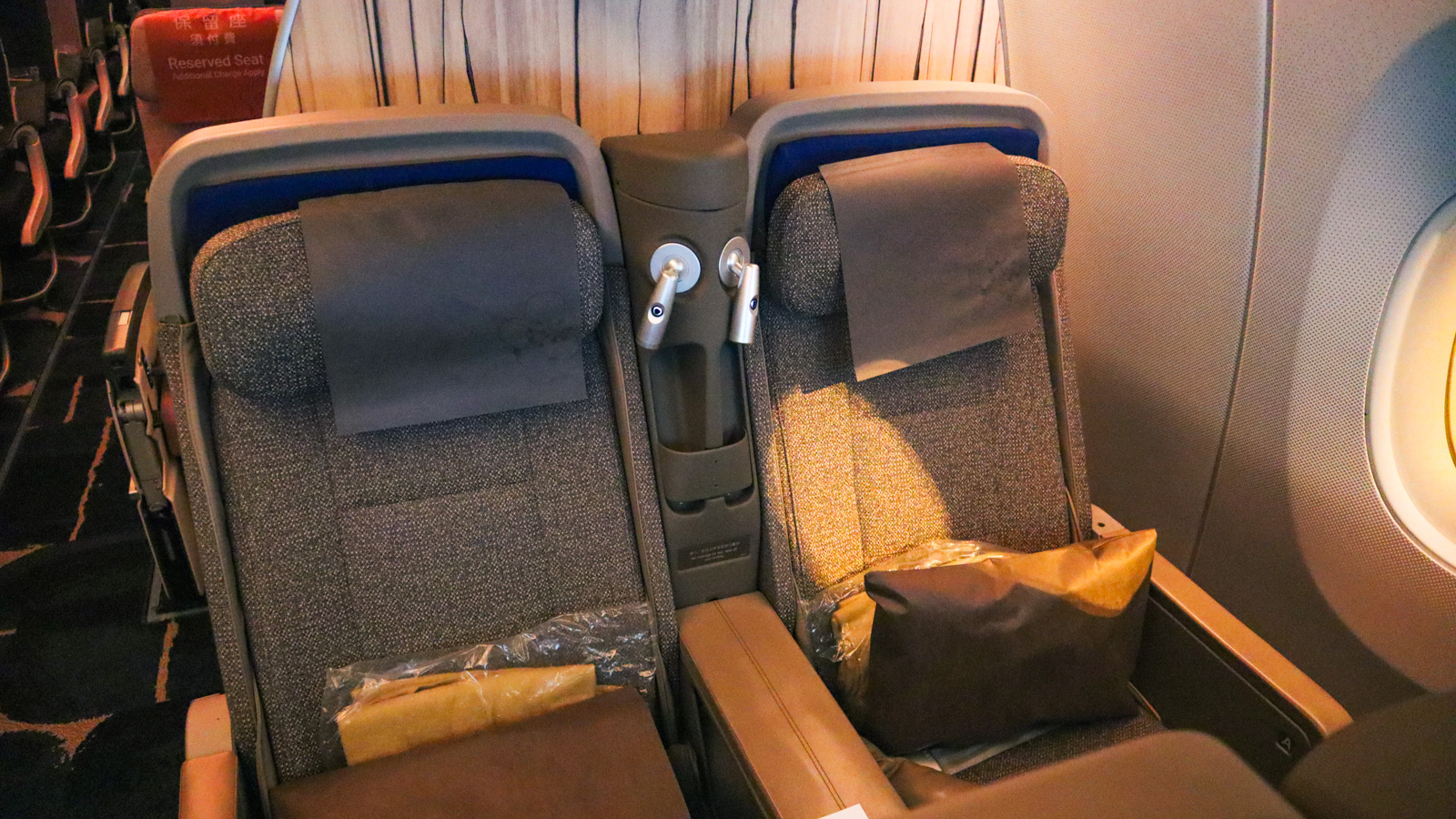
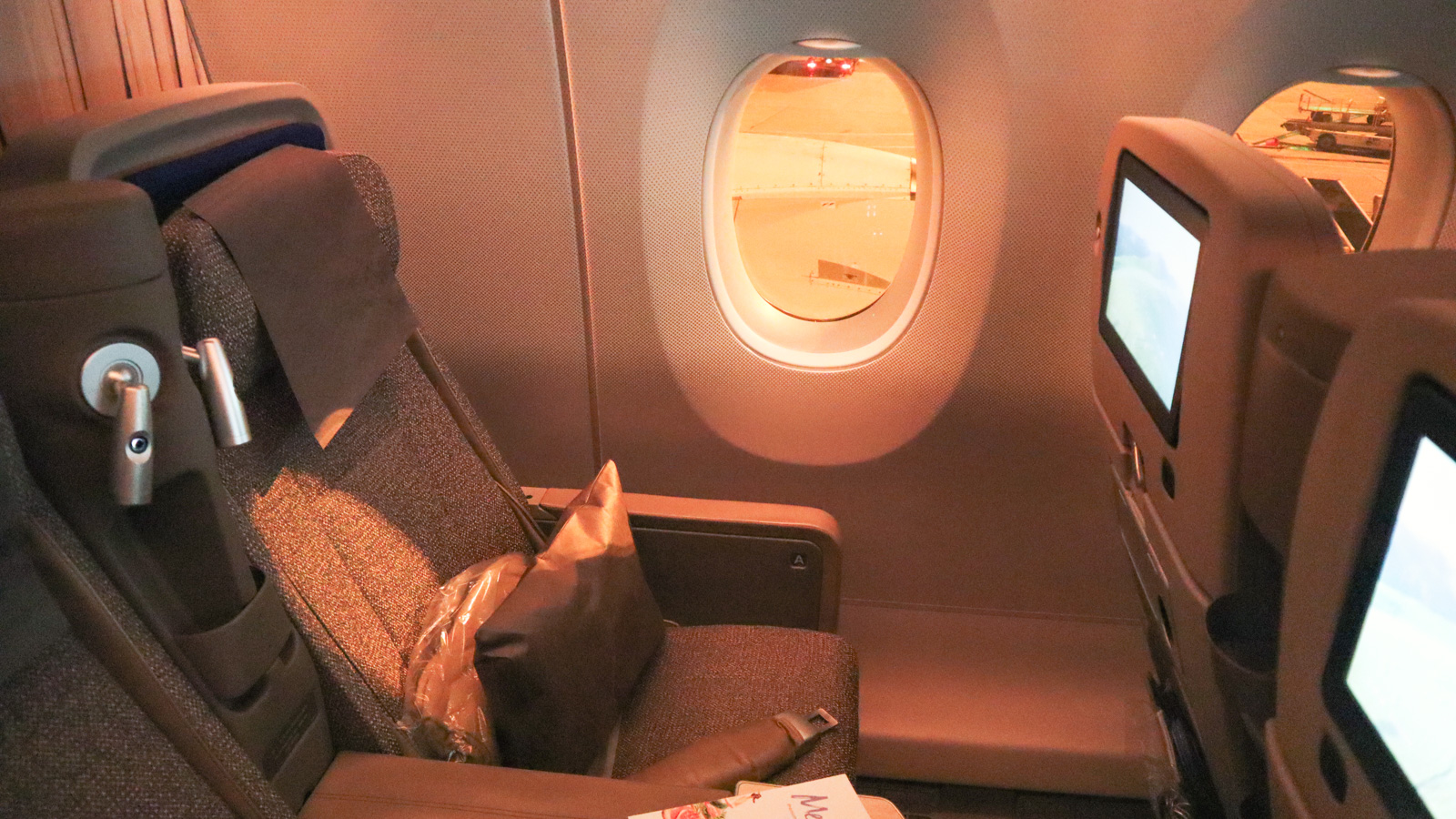
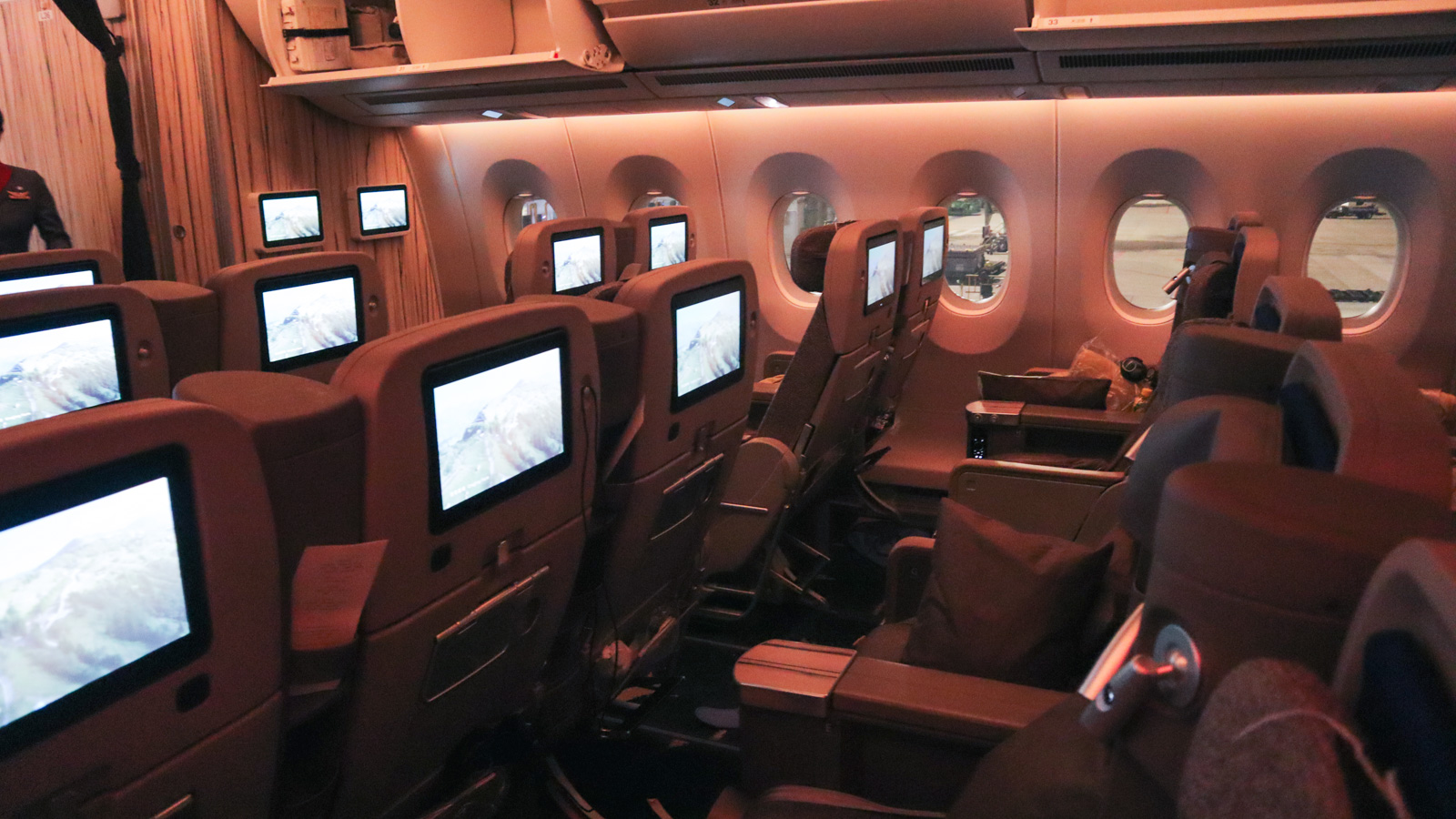
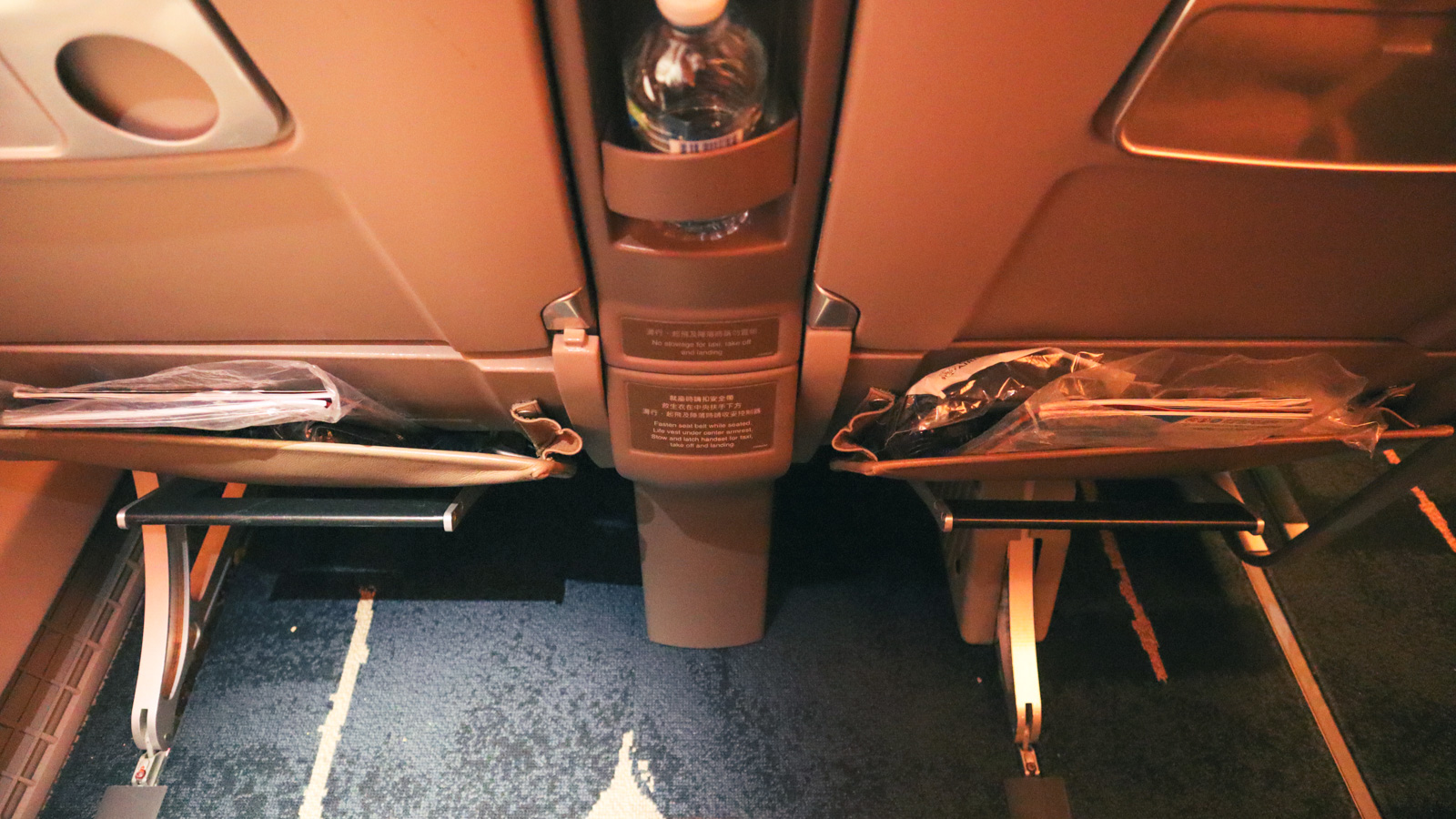

Now, full disclaimer before I jump into the specifics of space on this flight: I’m barely 5’4″. The 39-inch seat pitch is ample for me to wriggle my legs, and the seat’s 20-inch width offers enough room for me to shimmy onto my side and get cosy. Your mileage may vary.
A flatbed isn’t on offer, but there is a generous recline coupled with a fixed seatback. My only gripe – just the one – is that I lose a portion of legroom when the seat is fully reclined. Despite this, I still manage a comfortable sleep between meals. When I’m up, I make use of the fold-down footrest and reading light at the head of my seat.
There’s one thing I can’t understate enough about China Airlines’ A350 Premium Economy: the storage. As someone who travels heavy and will take the opportunity to sprawl out, I’m always appreciative of storage room. Almost everywhere I turn, there’s a nook somewhere to store something. My water bottle and glasses slot into the space between the seats in front. While charging, my phone sits in the small compartment alongside me. My post-dinner Tim Tam rests comfortably on the small tray table under the screen. It really is the little things.
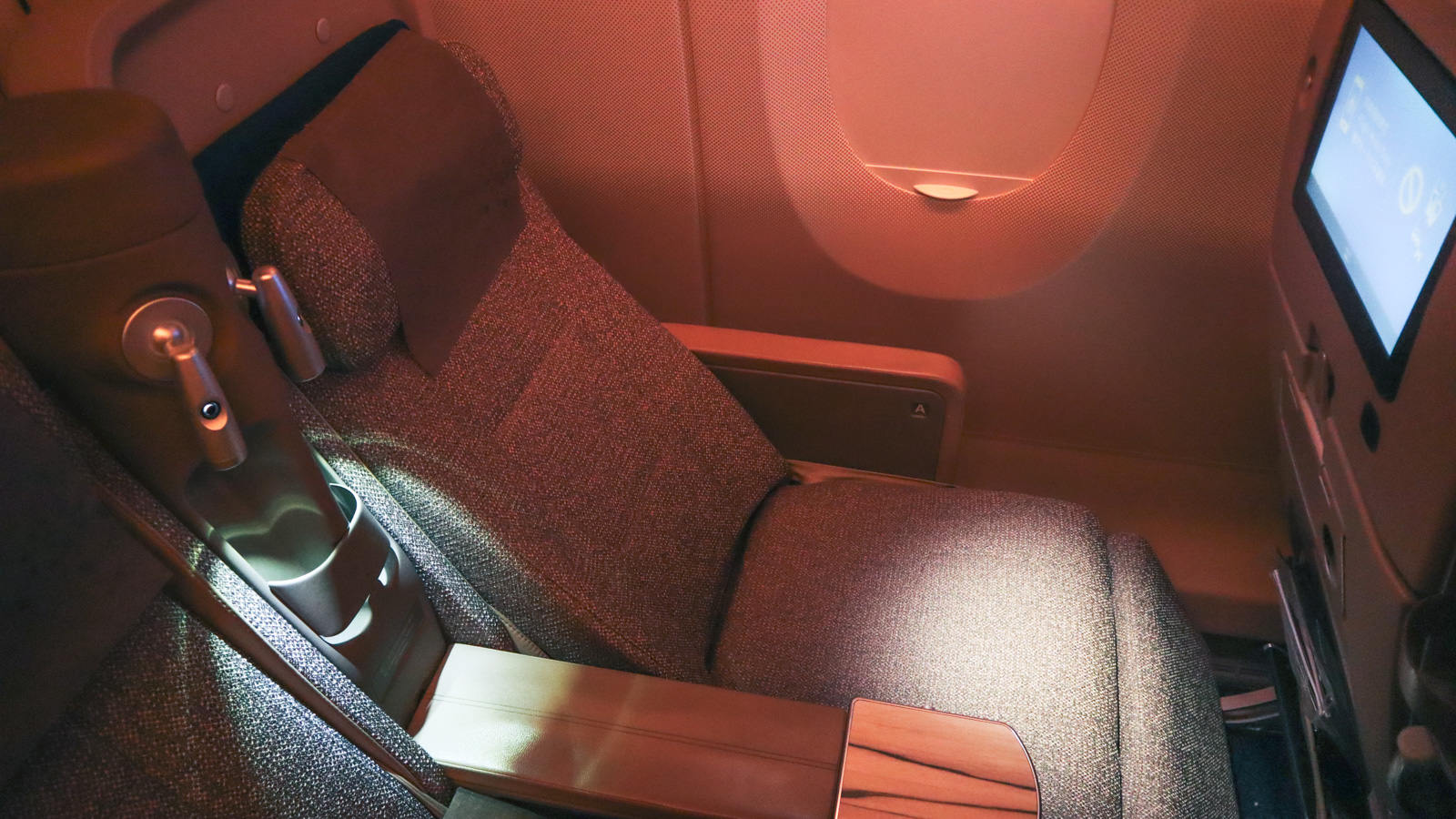

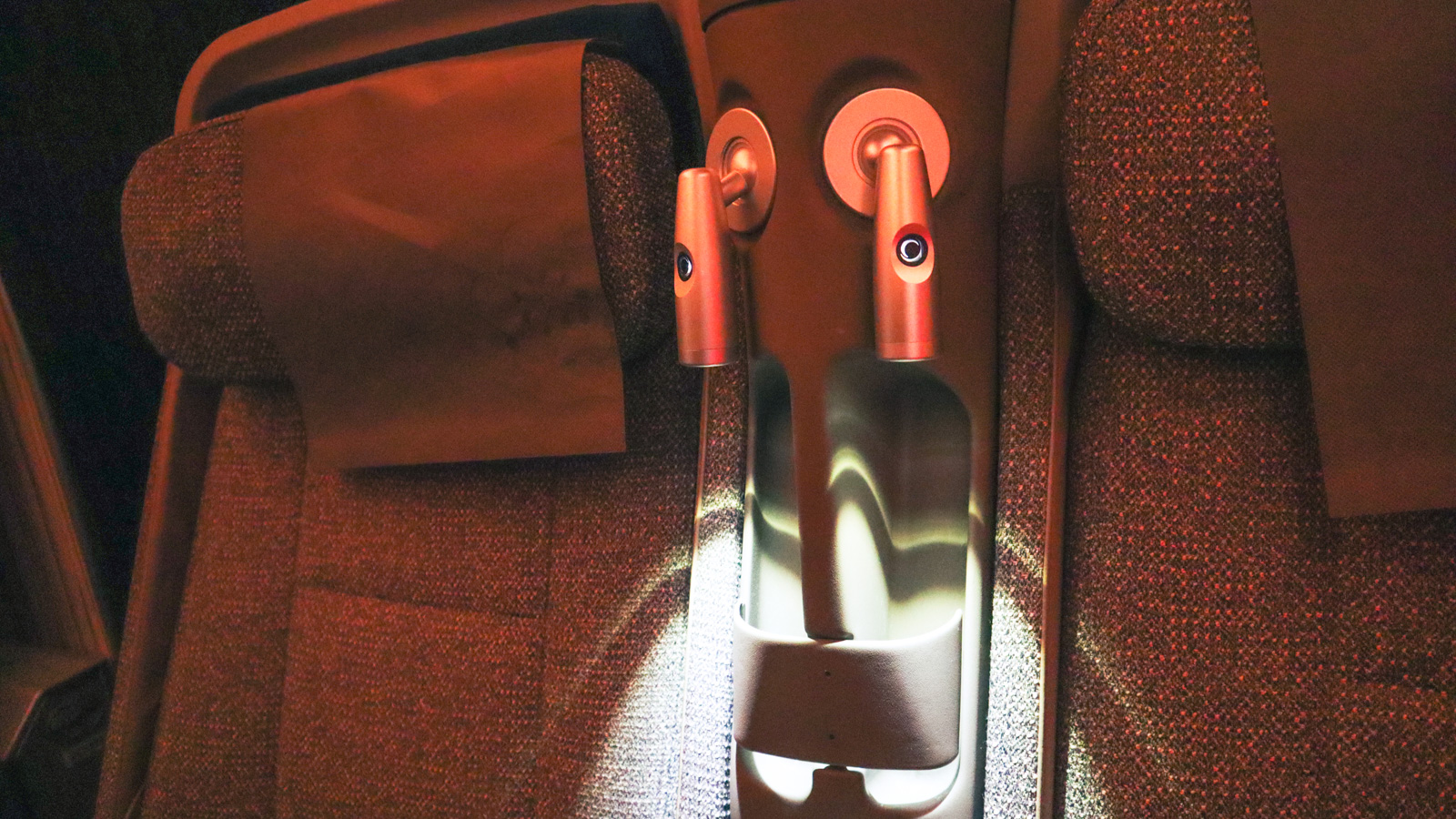
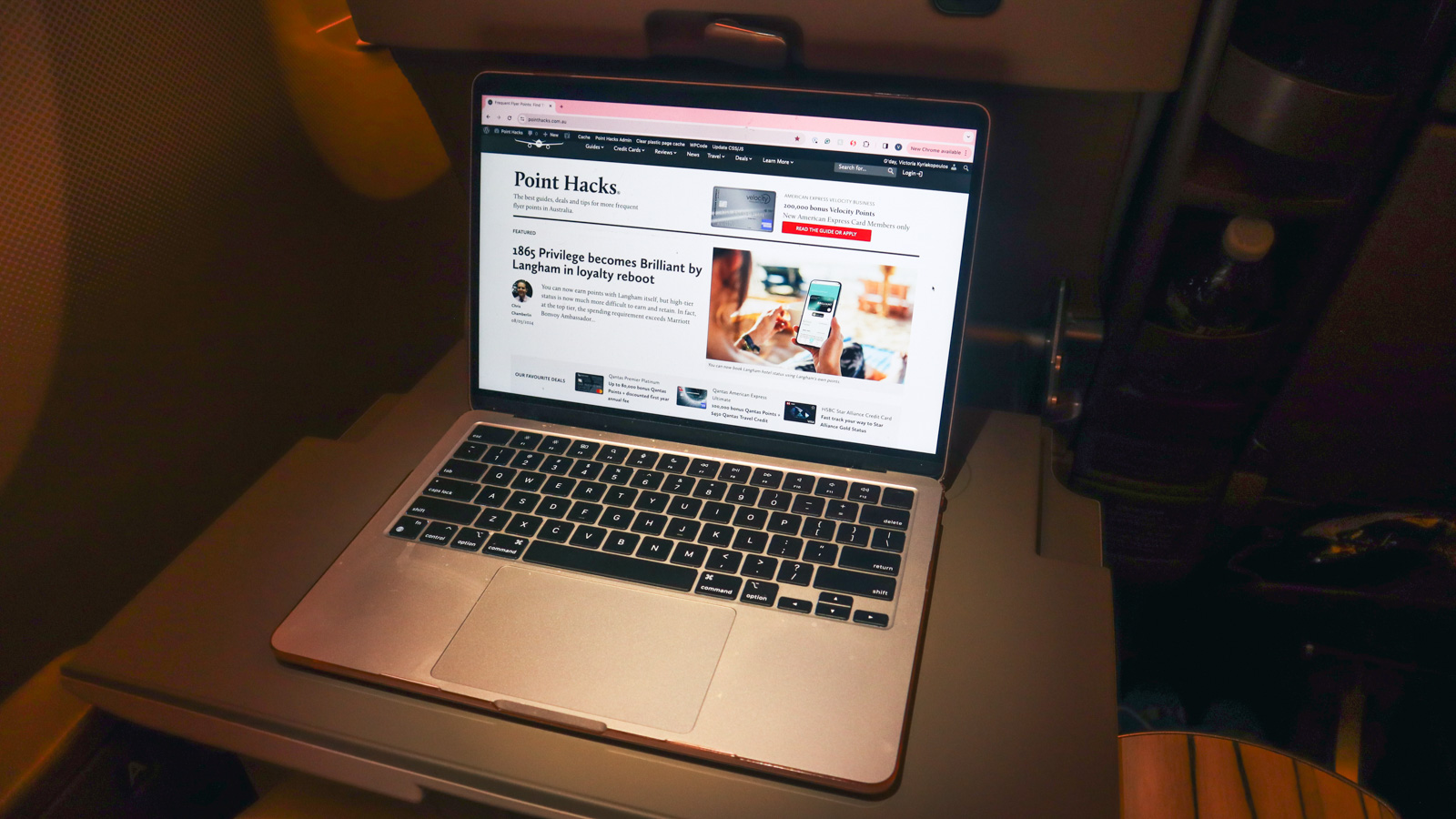

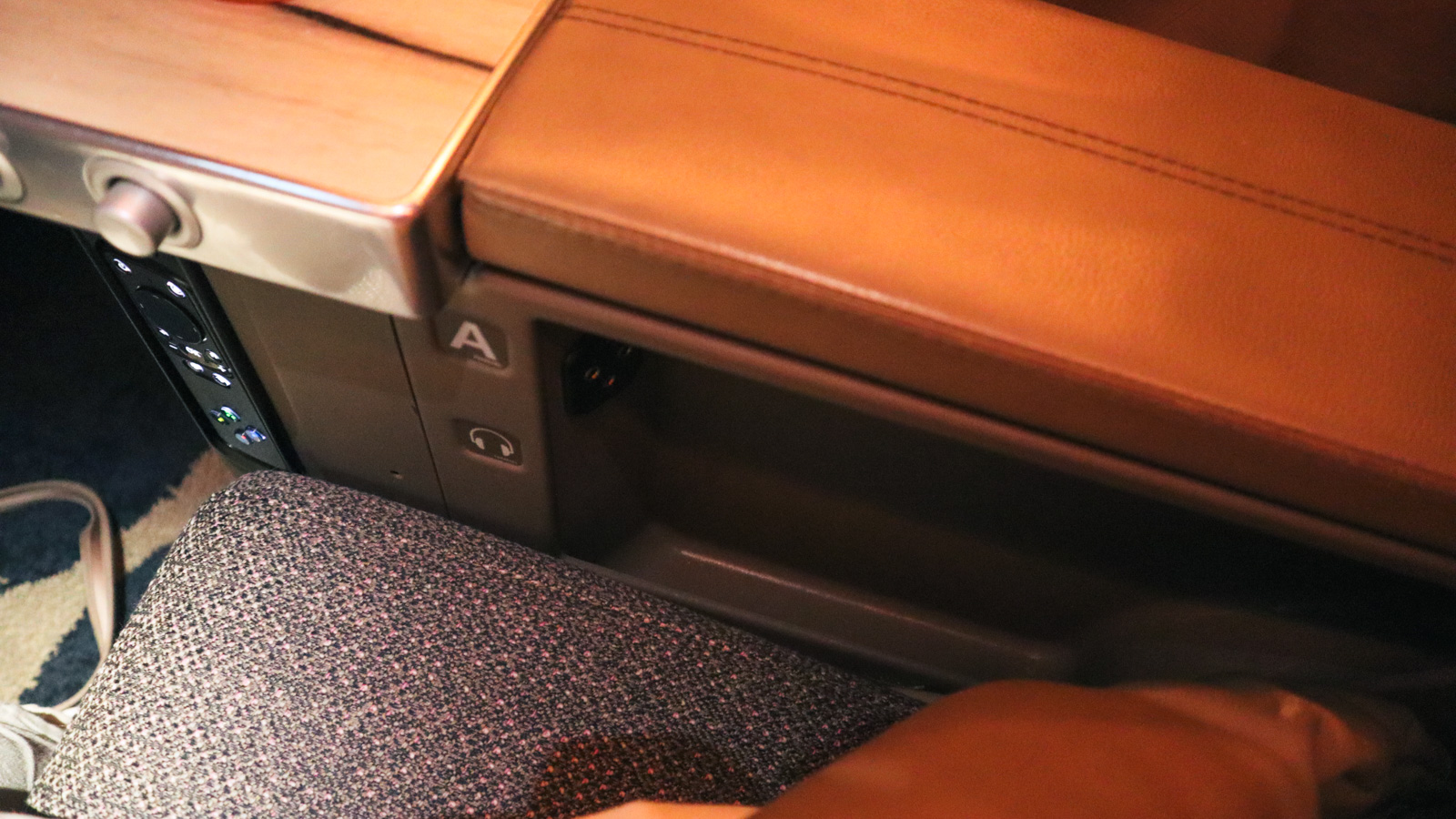
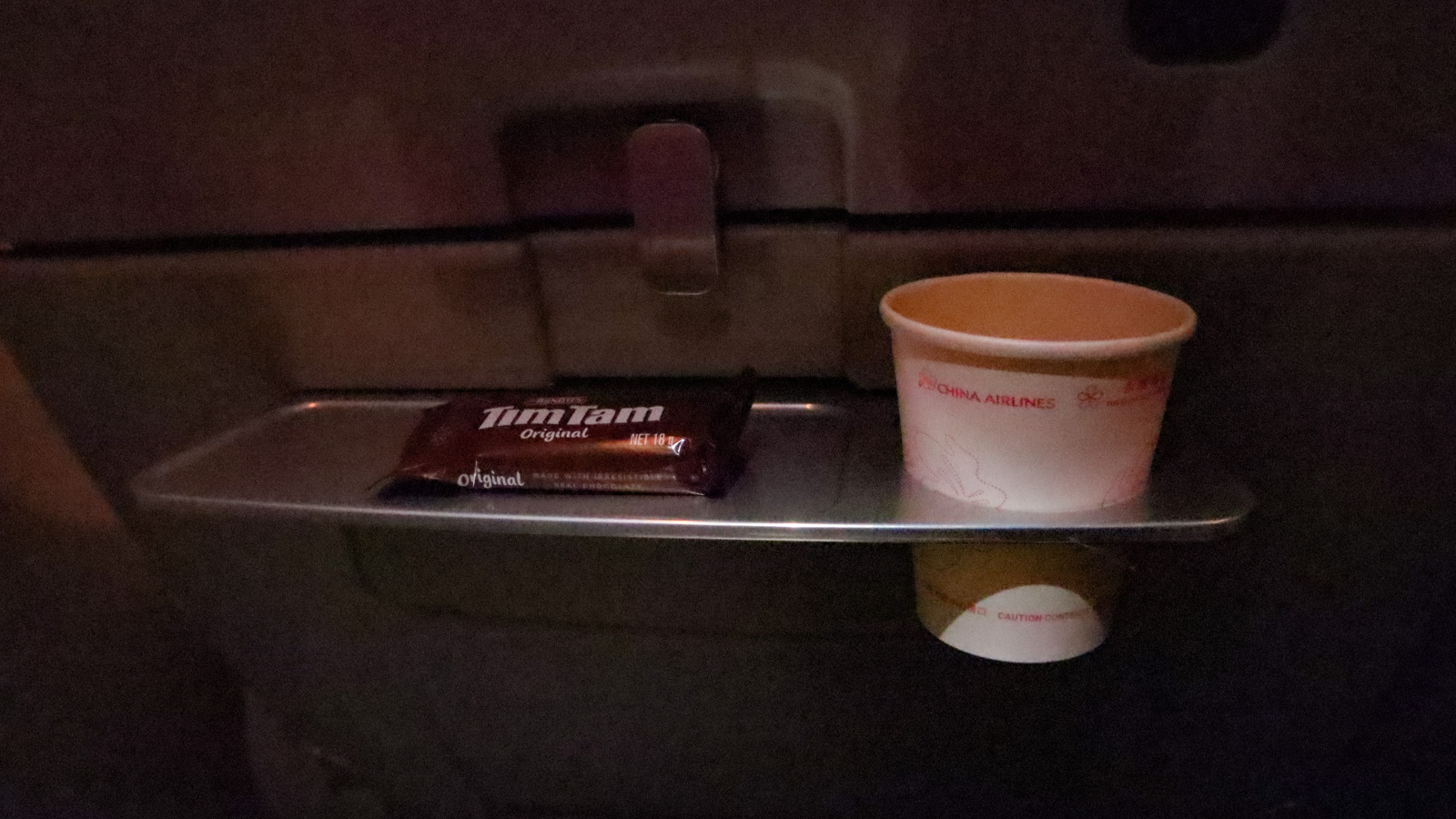
China Airlines A350 Premium Economy food & beverage
Dinner
Seven days prior to departure, I receive an email inviting me to pre-select my meals on the China Airlines website, with Taiwanese and Western options available. Prior to takeoff, the cabin crew confirm my selection: the steamed hoki fish with black bean sauce and fried rice. This lands on my tray table just 25 minutes after takeoff, alongside a generous smoked salmon salad and other accompaniments. All in all, it’s a substantial feed without being too heavy if you’re planning a snooze.
During the meal service, small tubs of vanilla bean ice cream by Australian brand Serendipity are distributed. It may seem like a minor detail, but the timing of this is spot-on. By the time I’ve polished off my main, the ice cream is now the perfect temperature to dig into. I wind down with a warm cup of green tea afterwards. Then, just like clockwork, the cabin plunges into darkness after dinner. It’s time for that snooze.
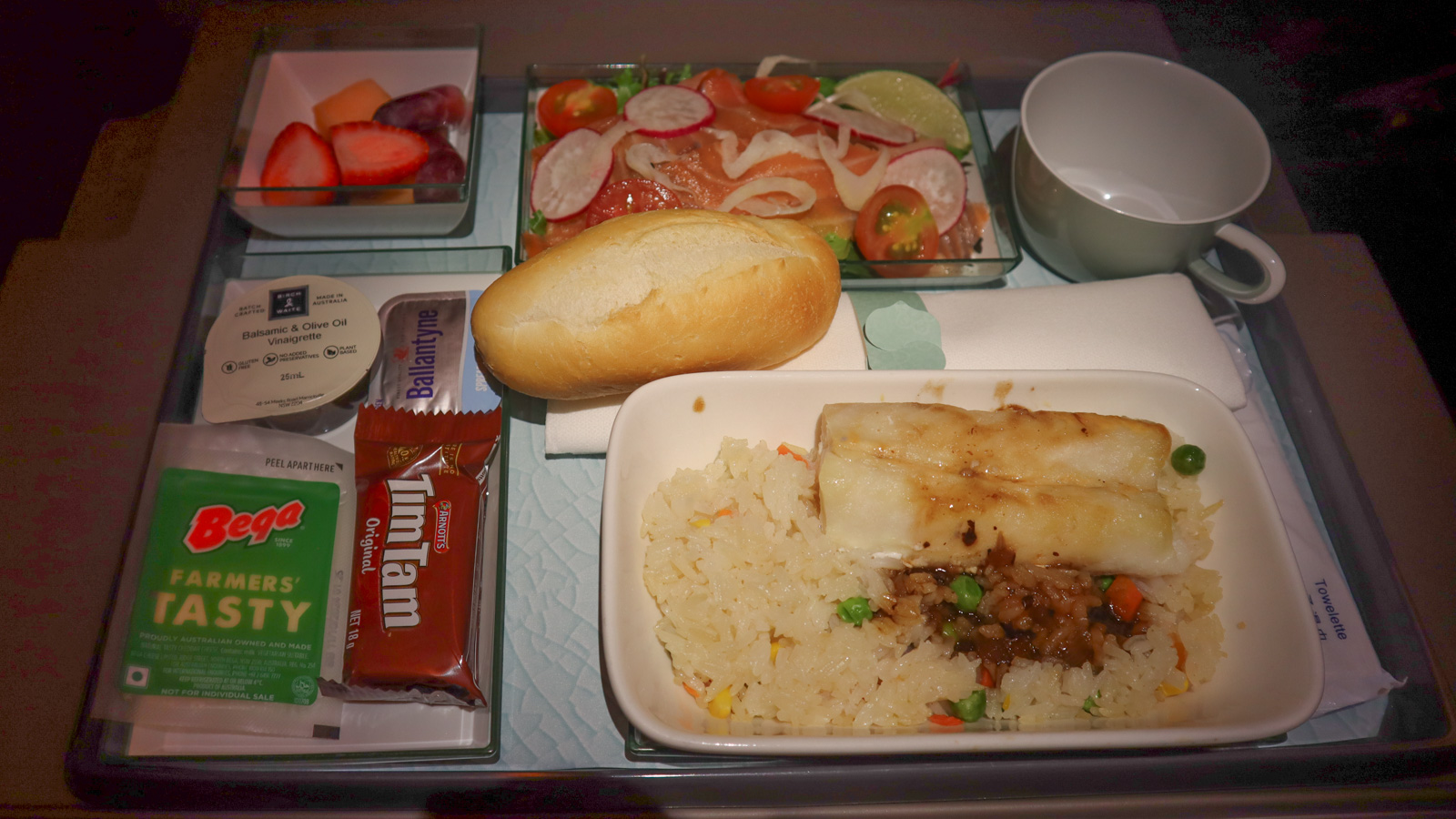
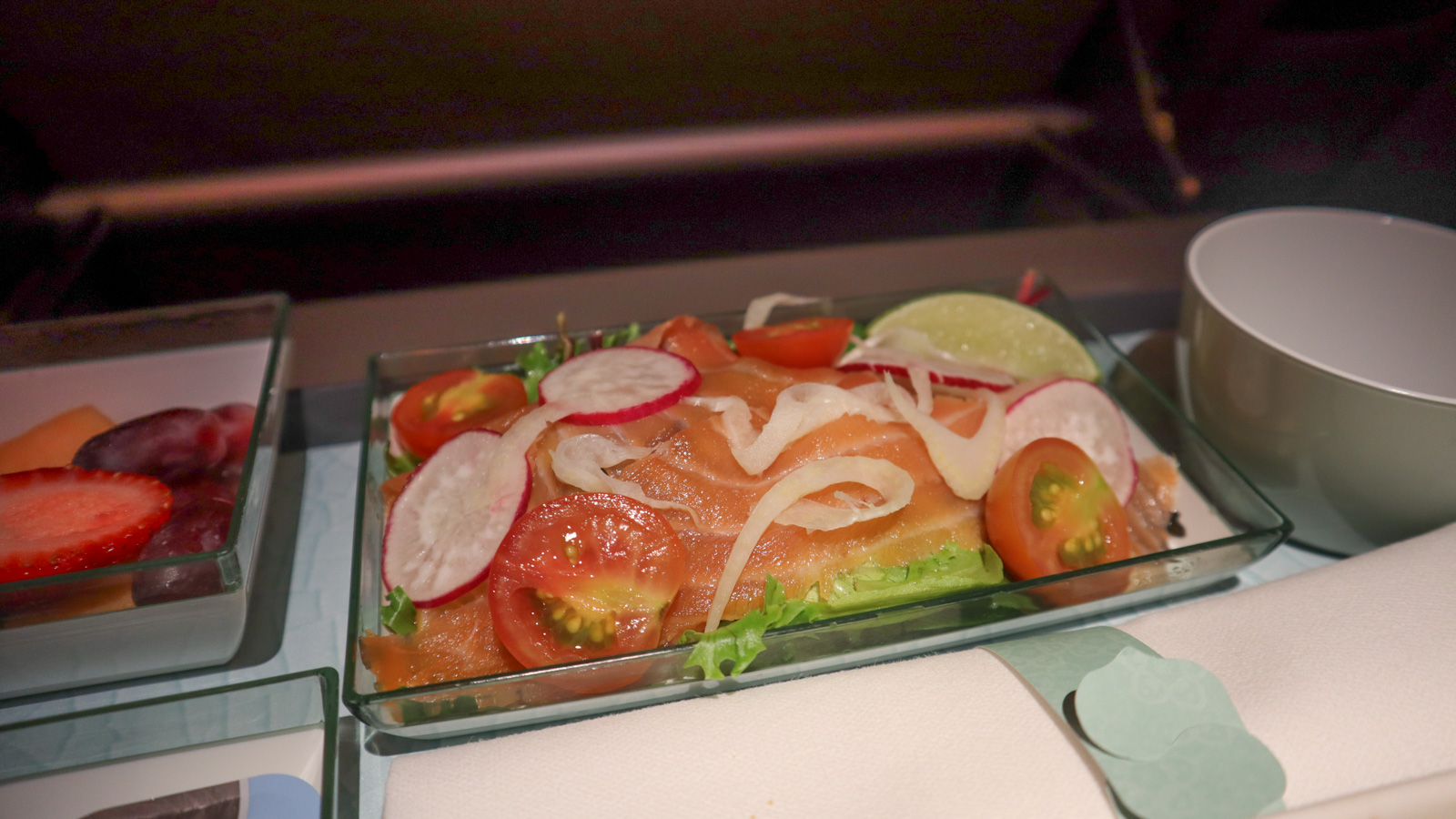
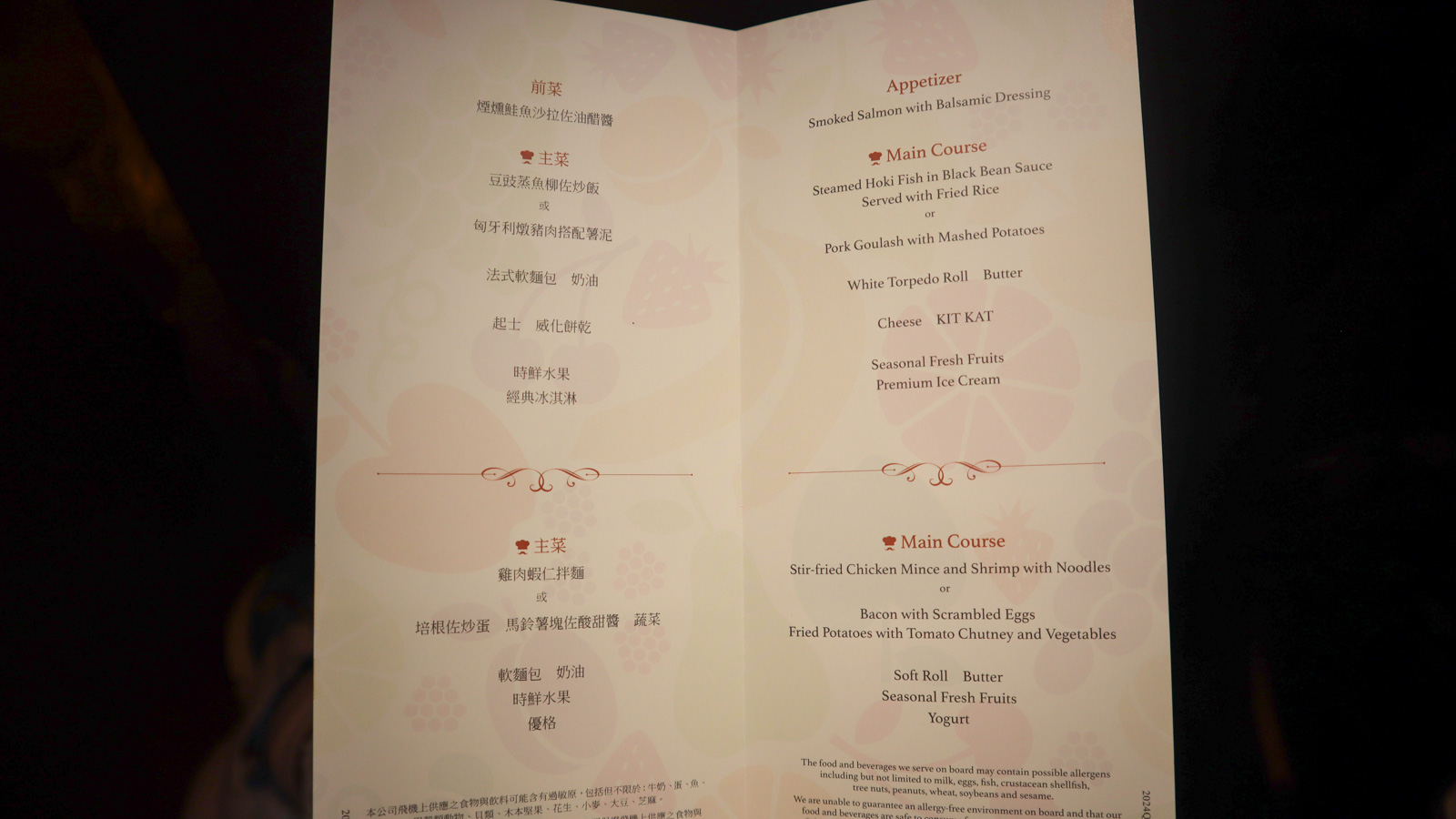
Breakfast before landing
I manage a solid four hours of sleep, but sacrifice a few additional hours to have breakfast in the name of research. I’ve pre-ordered the Western option this time – fluffy scrambled eggs served with bacon and fried potatoes. Again, another tasty and filling feed. Though doing the math, it’s around 2:30 am in Taipei, and I’ve probably just thrown off my body clock with this meal. Oops.
Prefer a snack instead? Premium Economy and Business Class passengers can visit the self-serve ‘Sky Lounge’ between the cabins for some nibbles. I’ve mapped out a full itinerary for my layover in Taipei, which mostly involves eating – so I give the snacks a miss this time.
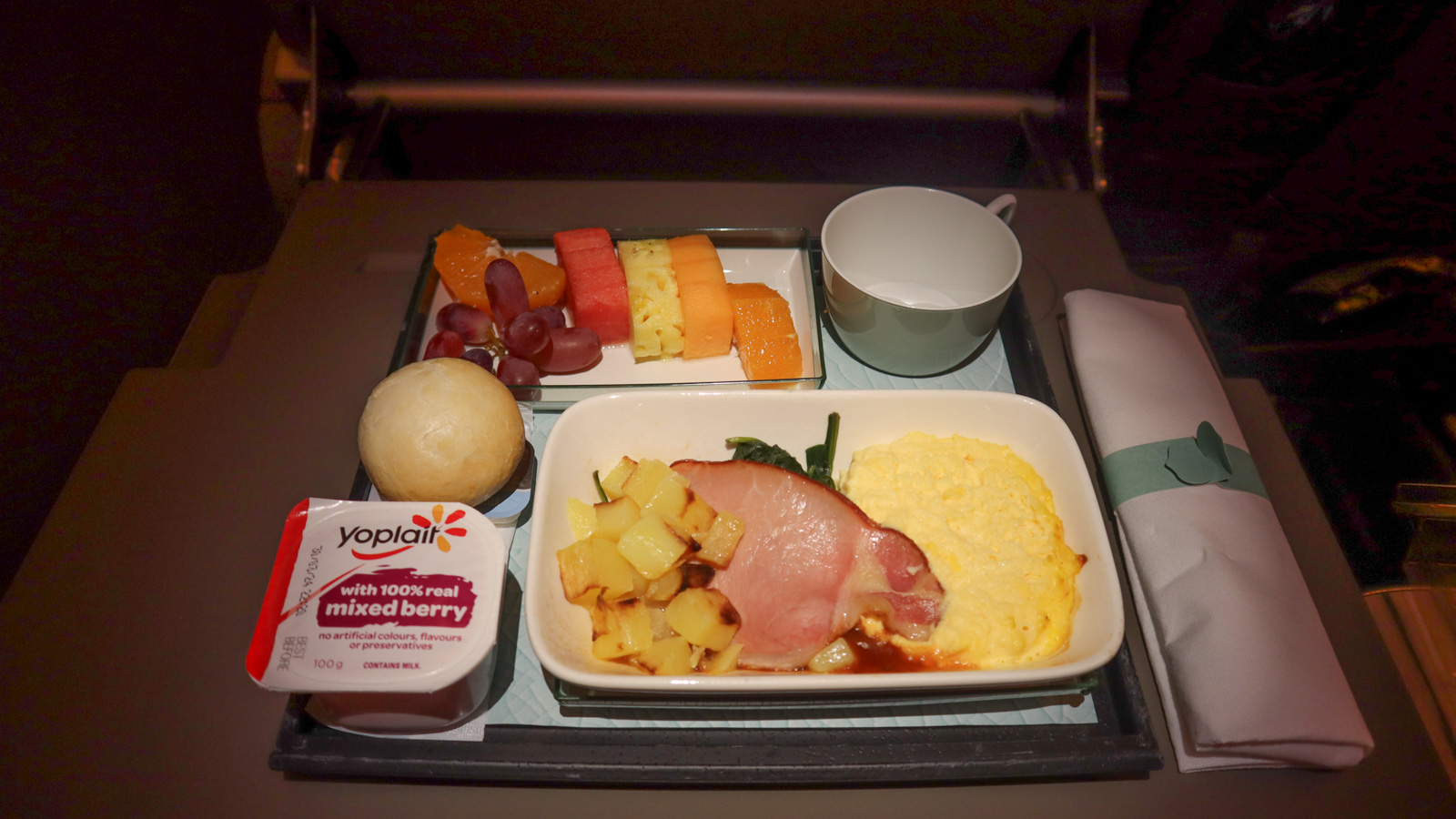
China Airlines A350 Premium Economy amenities
Inflight entertainment, Wi-Fi and power
Before I hit the hay, I skim the in-flight entertainment. The 12-inch HD touchscreen is crisp and responsive. It isn’t adjustable, but I can still comfortably see the screen while reclined. There’s a good range of anime and Korean dramas, if you’re that way inclined, as well as a global selection of music. Foodies may want to check out the various food shows for recommendations on where to eat in Taiwan. The provided headphones deliver a sharp sound, and as far as its noise-cancelling capabilities go, it does the job.
Speaking of which, the headphone jack is tucked under the centre armrest. Also in the centre console you’ll find individual universal power sockets, plus USB-A ports below each screen.
Wi-Fi is available on the flight. It’s not complimentary for Premium Economy passengers, unless you’re an Emerald or Paragon member of China Airlines’ Dynasty Flyer Program. But you can purchase a Wi-Fi plan to suit your needs:
- 15MB lite messaging plan – US$3.25
- 1 hour – US$11.95
- 3 hours – US$16.95
- 24 hours – US$21.95
The timed plans offer continuous access after your first login, with no data restrictions. What’s great about China Airlines’ inflight Wi-Fi is that you can transfer your plan between devices after you register for an account. But note you can only use your Wi-Fi plan on one device at a time. And if you’ve got an onward China Airlines flight on an A350 or Boeing 777, and you’ve got time remaining on your plan, you can log in and access the internet on your next flight.
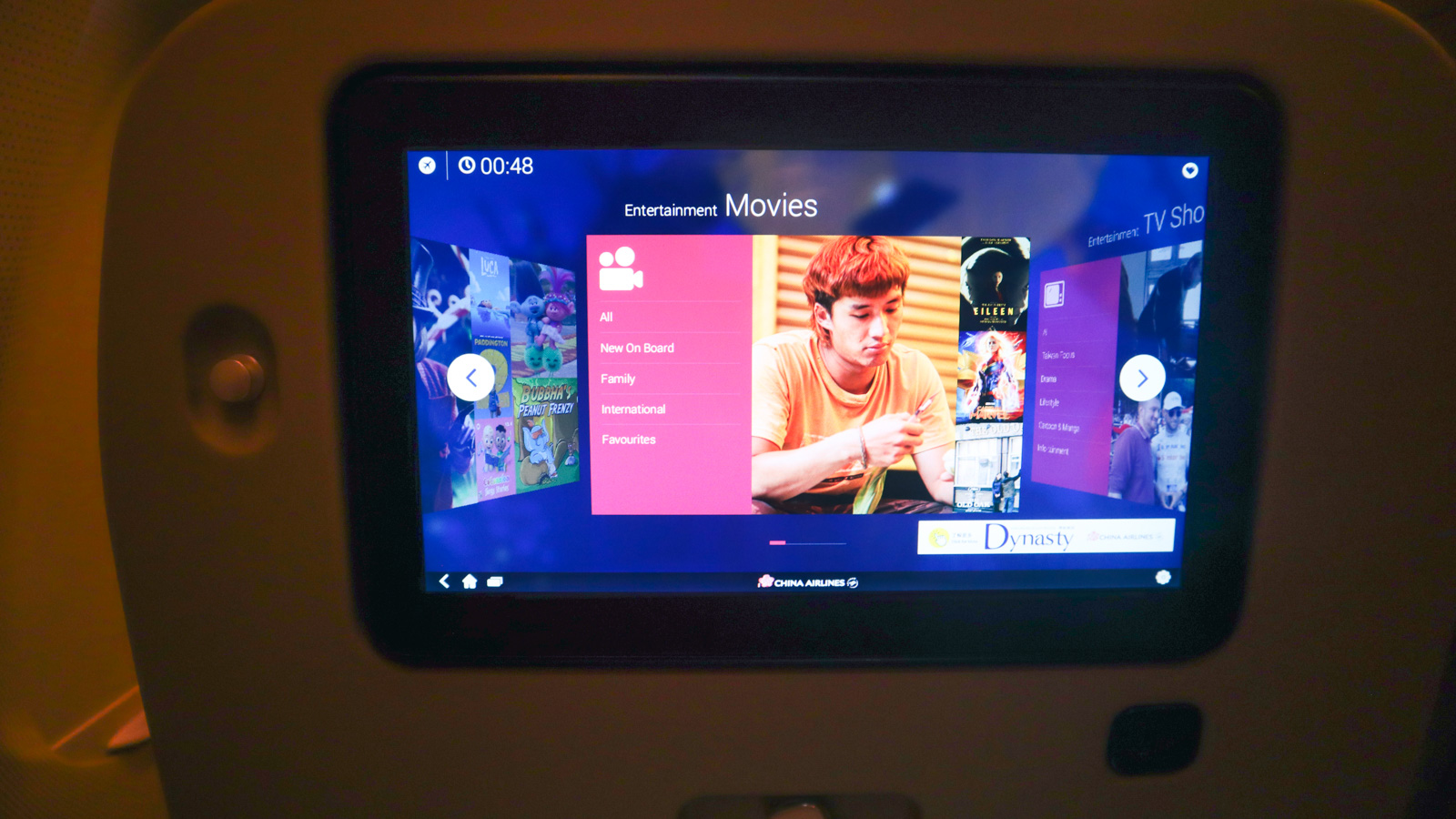
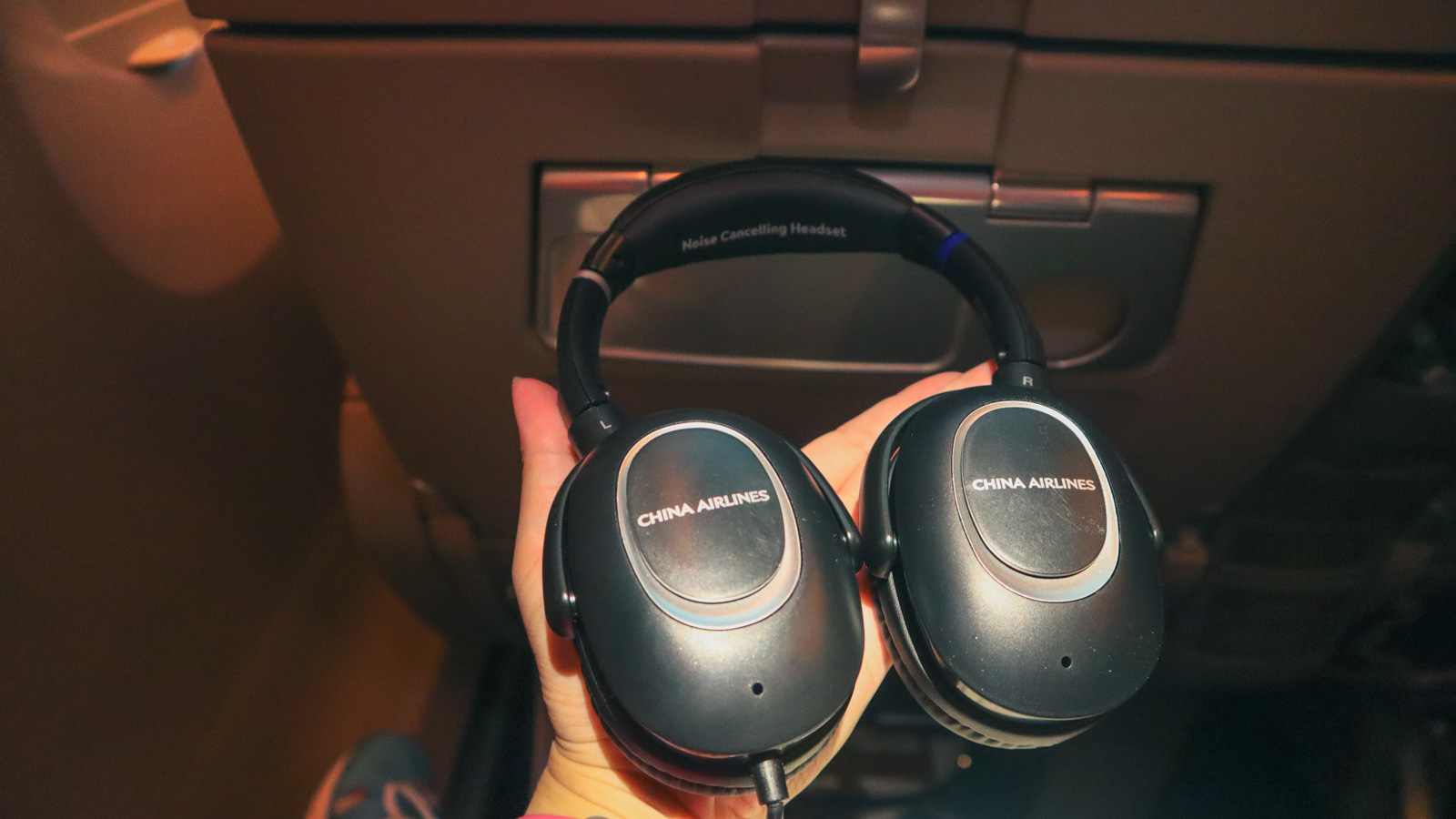
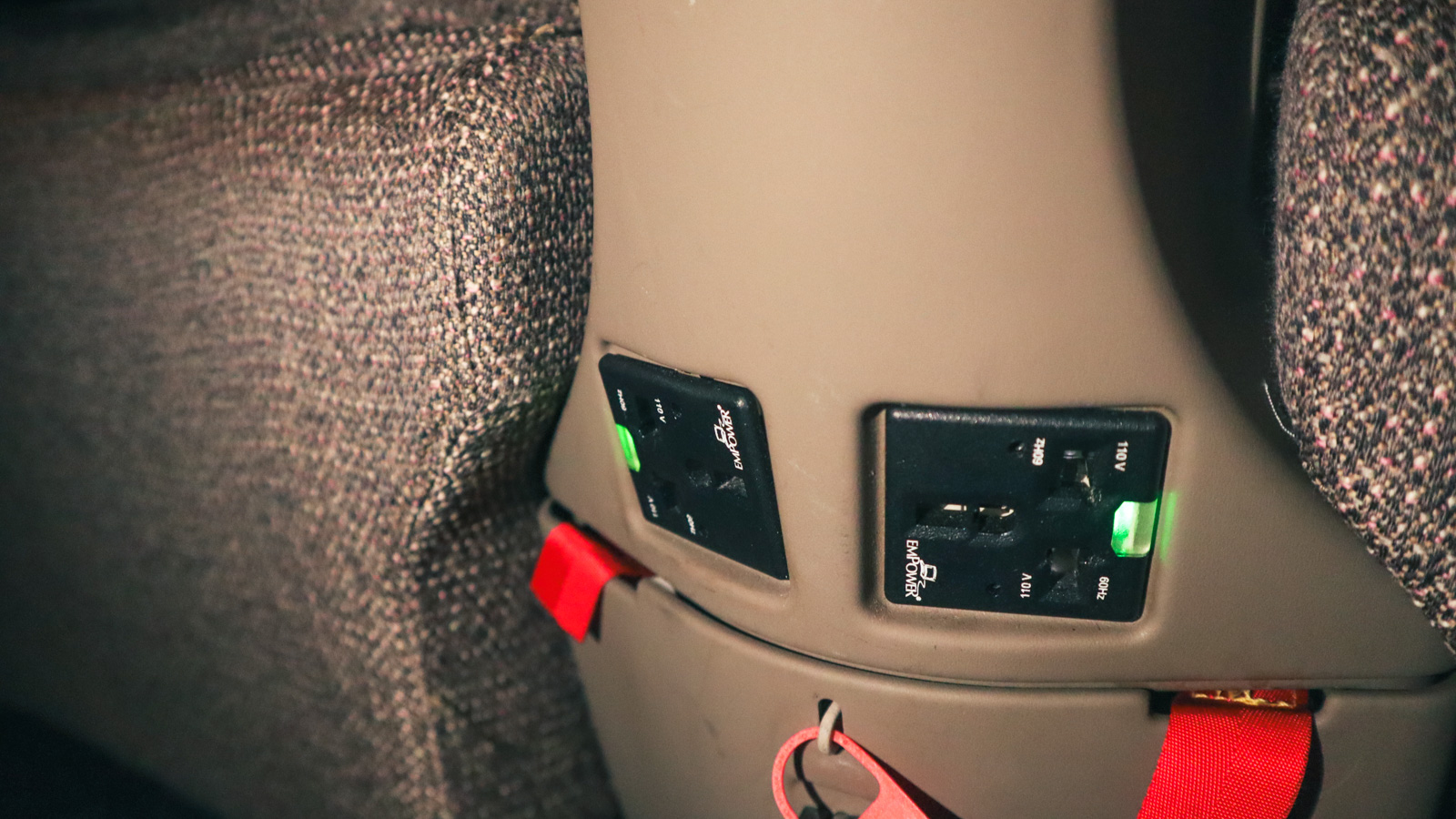
Amenity kit
Once we’re in the air, cabin crew distribute amenity kits by The North Face. It’s a simple kit, but it contains all the essentials: hand lotion, hand sanitising gel, ear plugs, a dental set and an eye mask. The reusable pouch has a carabiner clip, with The North Face logo and subtle China Airlines branding present. In the lavatories there’s a refreshing mist spray by Pure Altitude, and lotion and handwash by Taiwanese brand Seamild. As an aside, the lavatory plays a soothing melody. I’ve seldom seen this on a plane, if ever. It’s a nice touch.
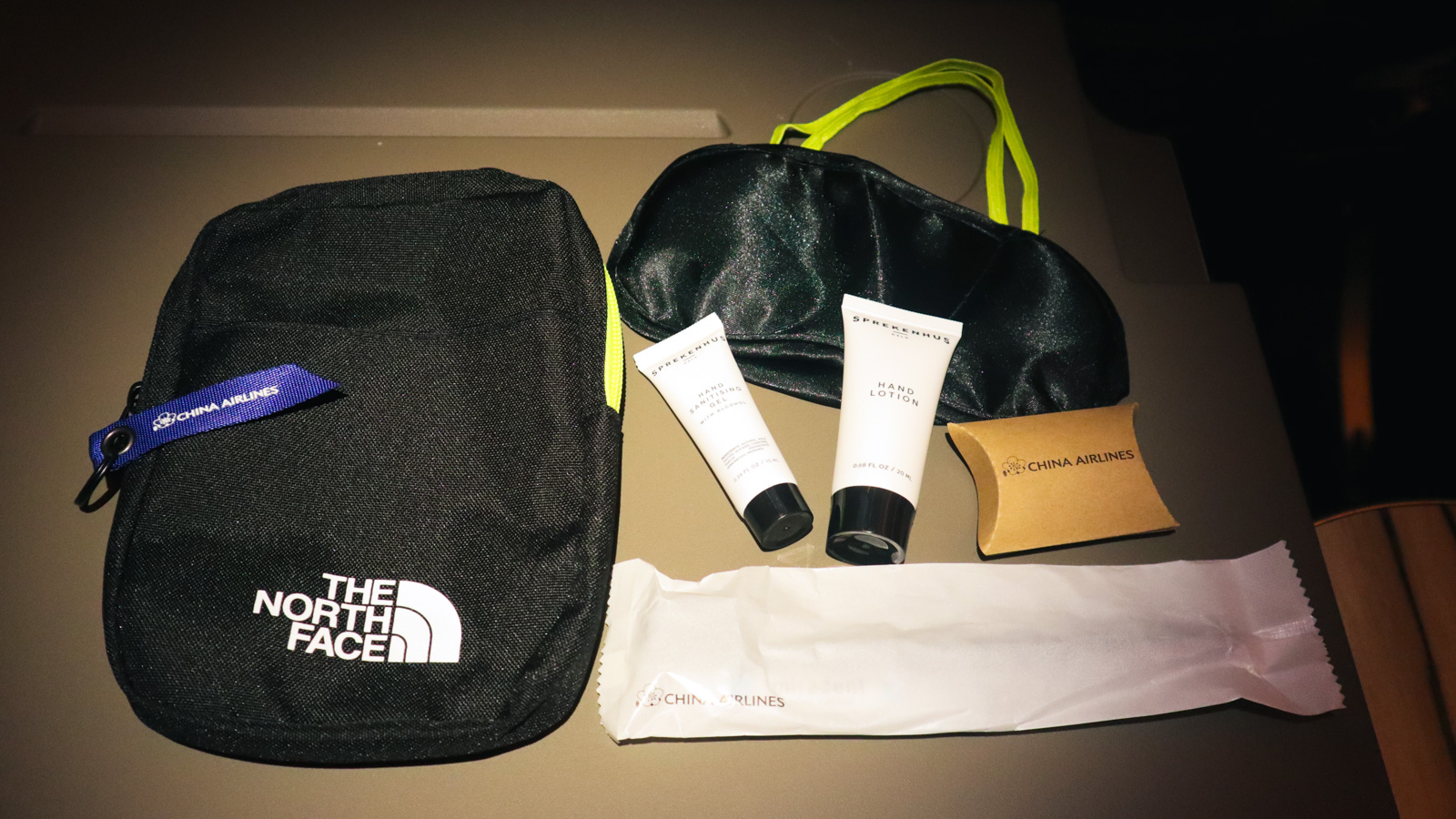
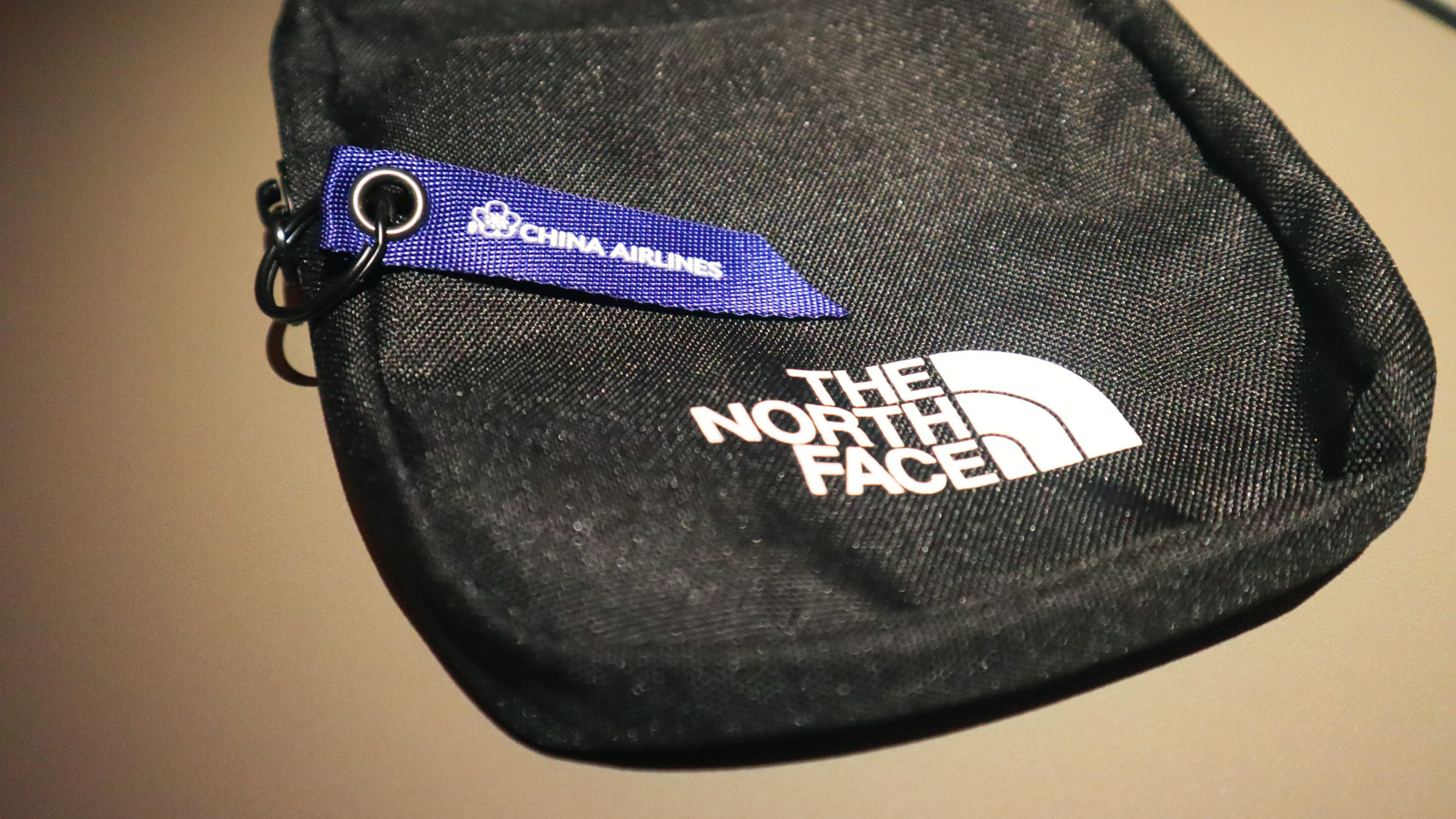
How to book this flight with points
There’s often excellent availability on China Airlines flights in various cabins using Qantas Points. Searching for Rewards flights from Melbourne, Sydney or Brisbane to Taipei on the Qantas website will bring up the direct route with China Airlines, if available. You can fly one-way in China Airlines A350 Premium Economy for 59,000 Qantas Points + fees and taxes ranging from AU$159-$170, depending on where in Australia you’re departing from. You can expect to pay around AU$2,499 one-way for a similar cash fare.
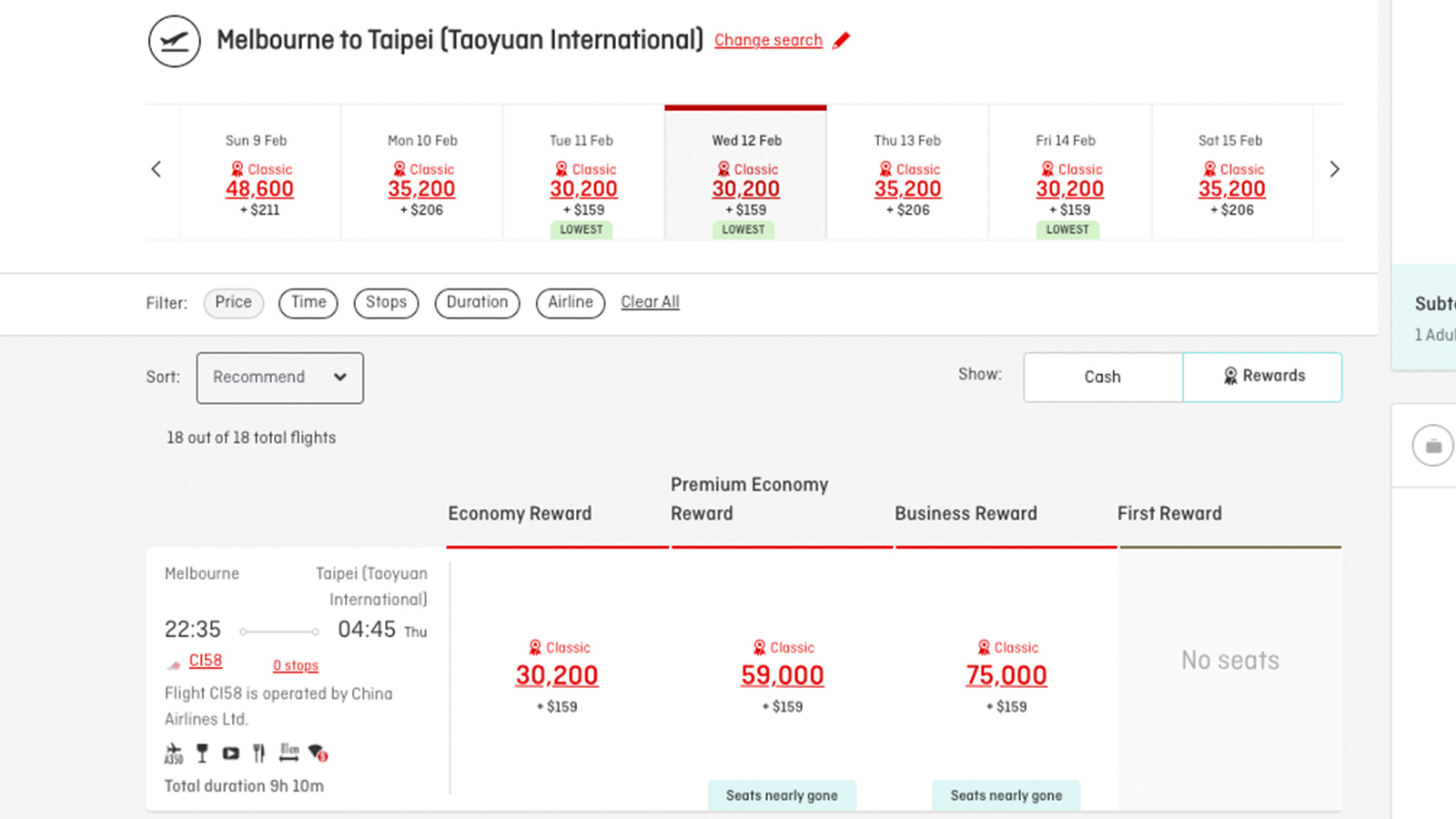
Boost your Qantas Points balance with a credit card sign up bonus.
Qantas American Express Ultimate
Summing up
Overall it’s a smooth flight in every sense, from the friendly cabin crew to the comfortable seat. I land at Taipei’s Taoyuan Airport at 4:15 am feeling well-rested and ready to hit the ground running. It’s one of those easy flights that pass quickly, even with a total flight time of almost eight and a half hours.
All of China Airlines’ flights from Australia to Taipei are overnight, so I appreciate flying Premium Economy if only to get some decent shut-eye. As far as downsides go, there’s just one: the slight loss of legroom when my seat is fully reclined. This isn’t a dealbreaker, as it’s an otherwise spacious seat – but something to keep in mind if you’re of a taller stature.
This flight is well-timed to connect with the airline’s other departures from Taipei. So I could’ve taken the 2.5 hour layover, and amused myself in Taoyuan Airport. But instead, I opted for a later flight to Fukuoka to give myself half a day to explore Taipei. My highlights include soaking up the views from the top of Taipei 101, shopping in Ximending, and visiting the two (yes, two!) Hello Kitty-themed 7-Eleven stores. There’s plenty to do.
If you’re a few Qantas Points short of a Business Class redemption, but want elevated comforts beyond Economy, then this experience hits the mark. The low cash co-payment is the cherry on top. So whether Taipei is your final destination or you’re bound further afield, China Airlines A350 Premium Economy Class offers a refreshing and convenient option when flying from Australia.

Also read: China Airlines A350 Business Class (Sydney – Taipei)
All photography by Victoria Kyriakopoulos, who travelled as a guest of China Airlines.
Stay up to date with the latest news, reviews and guides by subscribing to Point Hacks’ email newsletter.

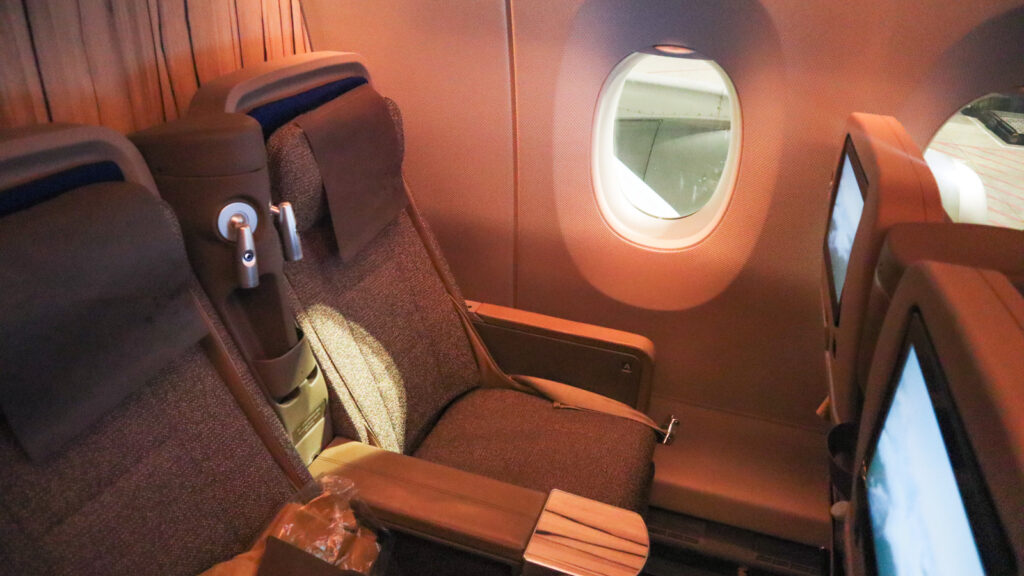

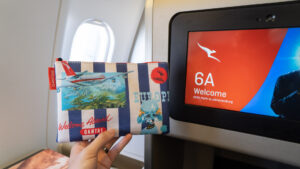

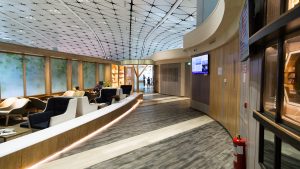

As for the PE toilets, my understanding is that the toilets you say were at the front of the PE cabin are actually at the rear of the Business class cabin. I don’t think that business class passengers would enjoy sharing their toilets with 31 PE passengers.
The lack of dedicated PE toilets is a major negative about flying PE.
You need a QF flight number or be flying on a Oneworld airline or be flying on CI in business class. CI is a member of SkyTeam.